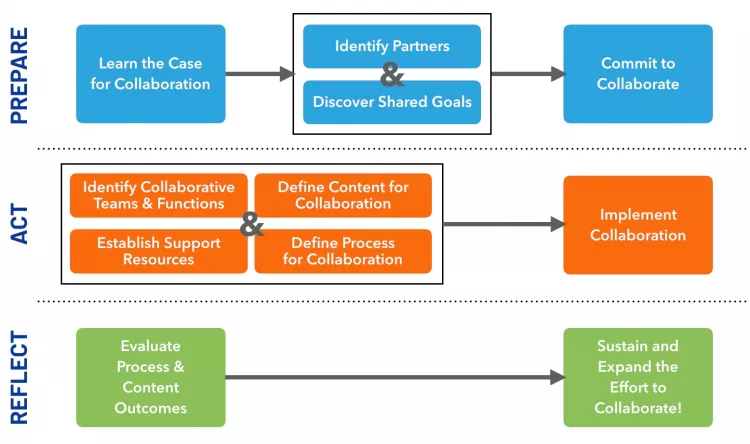Research shows that effective collaborative partnerships in education lead to greater teacher retention and educator empowerment, more effective communication among stakeholders, and an increase in student success, even in high poverty school districts.
Getting Started
Education stakeholders–families, educators, principals, district and state leaders–share a goal: great public schools for every student. But we stumble in implementing change when we don’t have structures that allow everyone to share their experiences and voice. We can change that by identifying and pursuing shared interests and by committing to “starting somewhere” on the path to sustained collaboration.
The Framework
Not all states, districts, or individual schools will begin at the same starting point, but their paths will all share the same elements, and they can all achieve successful collaboration by assessing where they are and following some basic steps on their collective journey to success.

The path to successful collaboration includes three phases: Prepare, Act, and Reflect. Depending on their own dynamics each state, district, or school will start at a different point along the path.
Prepare
Understand the benefits of collaboration (increased student outcomes, educator retention, and association & administration roles in teaching and learning). Then, invite other stakeholders who might be interested in collaborating around student-centered goals. Seek commitment to collaborate.
Act
Build the structures and processes needed to started collaborating. Form working teams (i.e. State partner group, district leadership teams, school leadership teams, working committees) and define— within those teams—how we will do our work and develop outcomes for what we want to accomplish. Determine the support services needed to train and support collaborative teams.
Reflect
How do we know that we have achieved our goals? In the reflect phase, you will catalog successes and challenges and share lessons-learned with others. This analysis is key to repeating and sustaining our work because each time we cycle through the three phases of our framework, not only do we improve it, but we further embed our tested structures into existing systems. It is our way of creating change in a systemic and sustainable way.